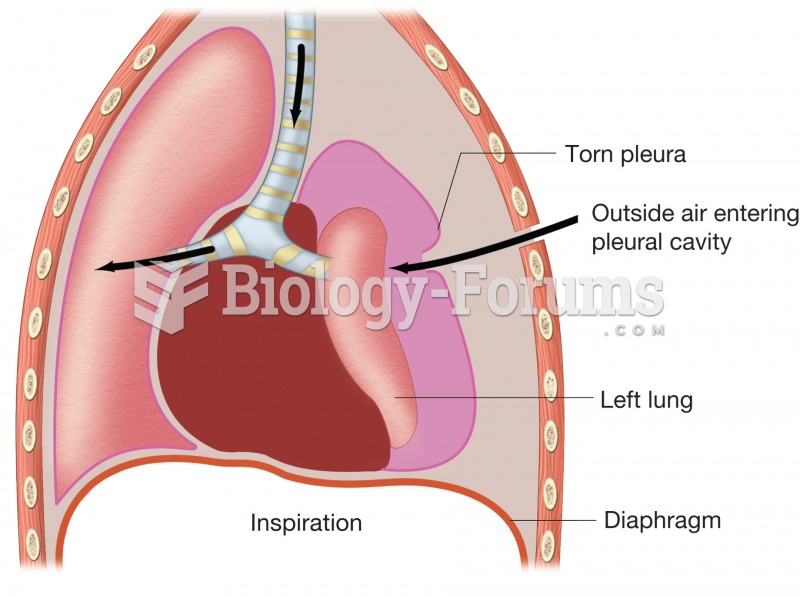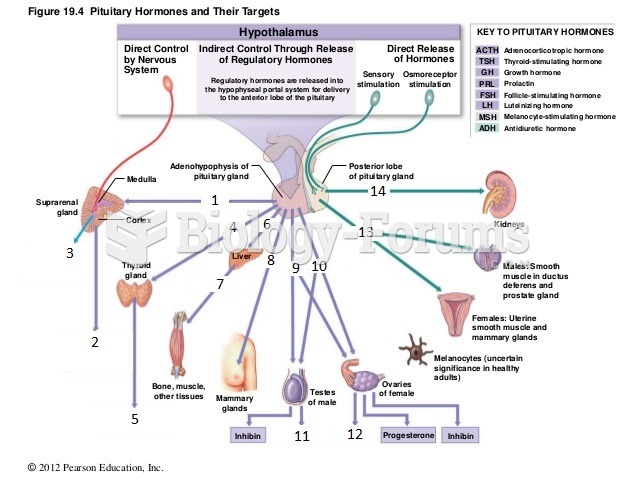|
|
|
The Centers for Disease Control and Prevention has released reports detailing the deaths of infants (younger than 1 year of age) who died after being given cold and cough medications. This underscores the importance of educating parents that children younger than 2 years of age should never be given over-the-counter cold and cough medications without consulting their physicians.
Human stomach acid is strong enough to dissolve small pieces of metal such as razor blades or staples.
Women are two-thirds more likely than men to develop irritable bowel syndrome. This may be attributable to hormonal changes related to their menstrual cycles.
Everyone has one nostril that is larger than the other.
Excessive alcohol use costs the country approximately $235 billion every year.







